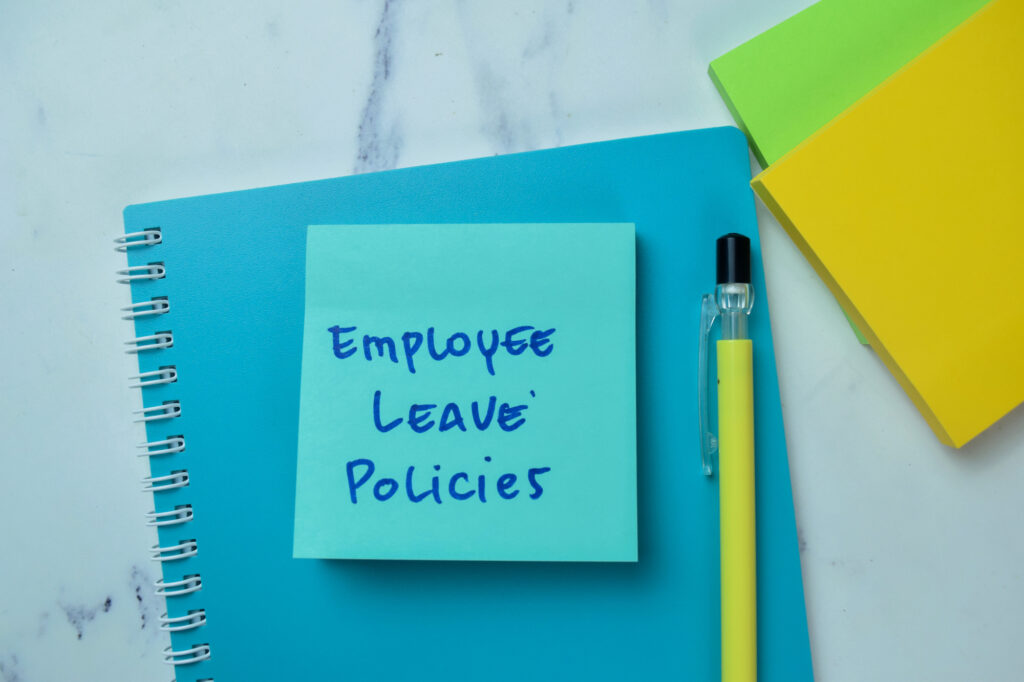 Business owners may be surprised to learn they aren’t universally required by federal law to provide any paid time off…no paid vacation days, sick days, or personal days. Some states and localities have certain mandatory paid time off. And there are a number of federal and state laws requiring unpaid leave time. With this tight labor market, however, businesses may want to review their leave time policies and revise their offerings.
Business owners may be surprised to learn they aren’t universally required by federal law to provide any paid time off…no paid vacation days, sick days, or personal days. Some states and localities have certain mandatory paid time off. And there are a number of federal and state laws requiring unpaid leave time. With this tight labor market, however, businesses may want to review their leave time policies and revise their offerings.
Leave time for holidays
There are 11 federal holidays: New Year’s Day, Birthday of Martin Luther King, Jr., Washington’s Birthday (President’s Day), Memorial Day, Juneteenth National Independent Day, Independence Day, Labor Day, Columbus Day, Veterans Day, Thanksgiving Day, and Christmas Day. Again, none of these holidays are mandatory for businesses to close or pay employees for time off. Workers in hospitality businesses, retail, and healthcare don’t necessarily get these days off even though most other workers do. Still, most small businesses give a number of paid holidays; the average is 7.6 paid holidays per year. Some offer even more (e.g., the Friday after Thanksgiving in addition to Thanksgiving Day).
Vacation days
According to the BLS, in 2021, more than one–third of private industry workers received 10 to 14 days of paid vacation after one year of service. After 10 years of service, 33% of private industry workers received between 15 and 19 days of paid vacation.
Sick days
The federal Family and Medical Leave Act mandates that employers with 50 or more employees give up to 12 weeks of unpaid leave to qualified employees. Federal contractors and subcontractors must give their workers one hour of paid sick leave for every 30 hours worked, up to 7 days annually. Some states, such as California and New York, require some paid sick leave (Paycor has a chart showing which states and municipalities require some paid sick leave). According to connecteam, workers in the U.S. have 7 to 8 sick days available to them.
My personal preference is to provide unlimited paid sick leave. In small businesses, employees understand how important they are (and should be shown this). They probably don’t use the sick days they’re already given. And owners don’t want those who are ill to report to work because they need the pay and have no other option.
Paid Time Off (PTO) packages
Many companies have shifted from giving vacation, sick, and personal days to paid time off (PTO). Employees accrue this time and can use it as they see fit. According to one source, the average PTO in the U.S., not including holidays and sick days, is 10 days and employees in small businesses earn 3 to 4 additional days for each 5 years of service.
Other time-off situations
In addition to recognized holidays, vacation days, sick days, and personal time off, some localities have a number of other time-off situations—paid or unpaid. An employment law firm in New York pointed out that there are 15 types of job-related protected leaves in that state.
Here are some of the job-related leaves that may apply in your location—check the DOL and your state department of labor:
- Blood donations
- Crime victims
- Domestic abuse victims
- Election day (time off to vote)
- First responders
- Jury duty
- Military leave
- Nursing mothers
- Parental leave for school functions
Crafting your policy for staff leave time
After you learn what you must offer, then consider what you can or should offer. Take into account:
- What the company can afford
- What the tax implications are of your leave program
- What competitors are offering
- What PTO means for employees for their physical and mental health
Consider offering a leave-sharing program. Companies can set up leave-sharing banks under which employees can donate their unused leave time; other workers can make withdrawals of this time as needed (e.g., for an extended illness or longer maternity leave). Typically, these leave-sharing programs are found in large companies, but there is no reason why smaller firms can’t use them (other than the administrative cost involved). The employee donating the unused leave time is taxed on it; these taxable amounts are subject to employment taxes. From time to time, the IRS allows leave-sharing programs to benefit a particular cause (e.g., Ukrainian victims of the Russian invasion in 2022 so that employee donations aren’t taxed as long as the employer makes a cash donation to a charity for the cause.
Final thought
To paraphrase Sun Tzu, keep your friends close, your employees closer. This can be done by providing the most generous leave program possible in your situation. If you have questions, discuss them with your CPA or an employment law attorney.
Find more information I’ve written about employment law in earlier blogs here.


